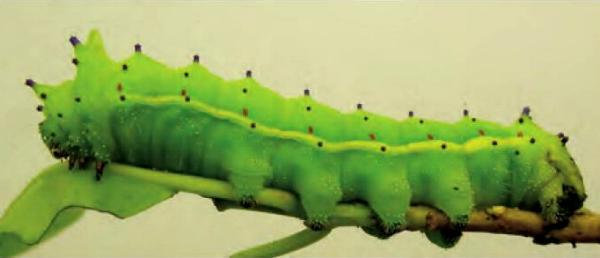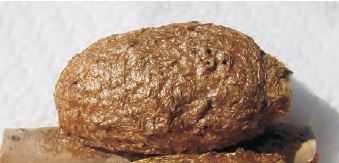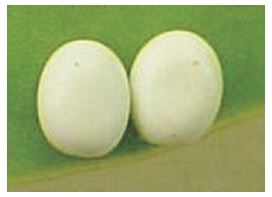
Photo: courtesy of David A. Lane, (Ted) E.D. Edwards, & Stefan Naumann, from
A revision of the genus Syntherata Maasen, 1873 (Lepidoptera: Saturniidae) within Australia,
with the description of three new species, and descriptions of their life histories,
The European Entomologist, Volume 3, Part 1 (2010), pp. 17-21.
First instar caterpillars of this species are yellow with black lines and markings.
Later instars are pale green with dark markings,
and are covered in stiff hairs.

Photo: courtesy of David A. Lane, (Ted) E.D. Edwards, & Stefan Naumann, from
A revision of the genus Syntherata Maasen, 1873 (Lepidoptera: Saturniidae) within Australia,
with the description of three new species, and descriptions of their life histories,
The European Entomologist, Volume 3, Part 1 (2010), pp. 17-21.
The caterpillars have been found feeding on trees from
EUPHORBIACEAE, including
Blind-your-eye Mangrove ( Excoecaria agallocha ), and
Guttapercha Tree ( Excoecaria parvifolia ).
Later the caterpillars become lime-green with a yellow line
along each side, and have purple tubercles
each of which has a cluster of short stiff hairs.

cocoon
Photo: courtesy of David A. Lane, (Ted) E.D. Edwards, & Stefan Naumann, from
A revision of the genus Syntherata Maasen, 1873 (Lepidoptera: Saturniidae) within Australia,
with the description of three new species, and descriptions of their life histories,
The European Entomologist, Volume 3, Part 1 (2010), pp. 17-21.
The caterpillar pupates in an oval cocoon in a shaded area on the food plant
or nearby vegetation, typically under a branch or on the south side of a trunk.
Metamorphosis can take up to three years depending on climate.

Photo: courtesy of David A. Lane, (Ted) E.D. Edwards, & Stefan Naumann, from
A revision of the genus Syntherata Maasen, 1873 (Lepidoptera: Saturniidae) within Australia,
with the description of three new species, and descriptions of their life histories,
The European Entomologist, Volume 3, Part 1 (2010), pp. 17-21.
The adult moths are yellow with
two or more zig-zag or dotted brown lines across each wing.
The forewings each have a round transparent spot in the middle,
and the hindwings each have a dark spot in the middle.
The moths typically have a wingspan of 8 cms.
The species occurs on
Queensland.

eggs, highly magnified
Photo: courtesy of David A. Lane, (Ted) E.D. Edwards, & Stefan Naumann, from
A revision of the genus Syntherata Maasen, 1873 (Lepidoptera: Saturniidae) within Australia,
with the description of three new species, and descriptions of their life histories,
The European Entomologist, Volume 3, Part 1 (2010), pp. 17-21.
The eggs are laid in short rows,
and are pale green and ovate, and have a diameter of about 1.5 mm.
Further reading:
David Lane,
A new species of Syntherata Maasen (Lepidoptera: Saturniidae) from northern Australia,
Butterfly & Other Invertebrates Club Newsletter,
Number 31 (2003), pp. 6-12.
David A. Lane, (Ted) E.D. Edwards, & Stefan Naumann,
A revision of the genus Syntherata Maasen, 1873 (Lepidoptera: Saturniidae) within Australia,
with the description of three new species, and descriptions of their life histories,
The European Entomologist,
Volume 3, Part 1 (2010), pp. 17-21, figs. 18, 40-53.
(written 10 December 2017, updated 21 April 2022)










